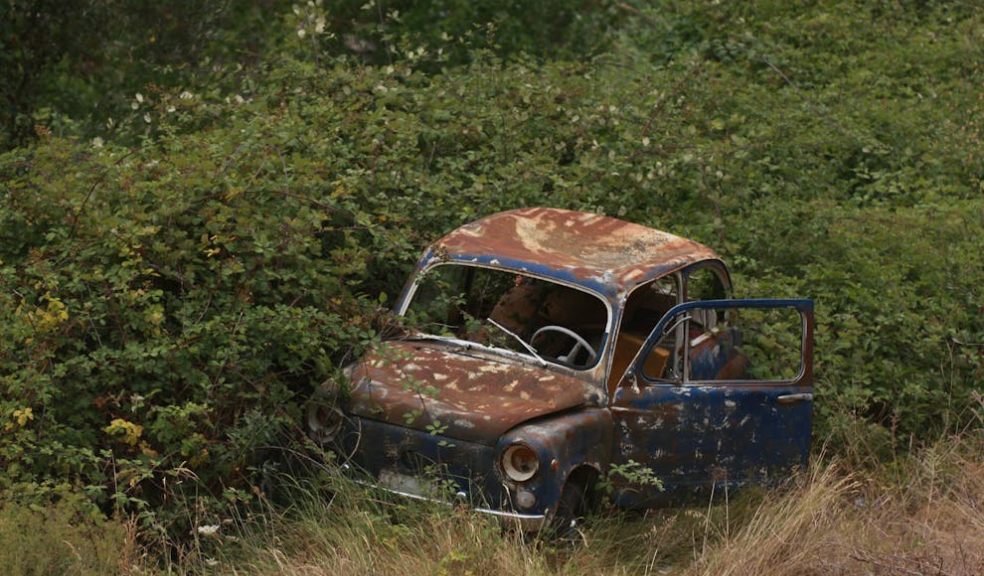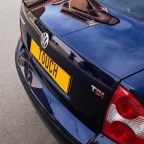
Top Myths About Car Scrapping in the UK: Separating Fact from Fiction
Car scrapping in the UK remains shrouded in misconceptions and outdated beliefs that prevent vehicle owners from making informed decisions about their end-of-life cars. These persistent myths often stem from historical practices, misunderstandings about current regulations, or simply misinformation spread through word of mouth. Understanding the reality behind car scrapping can help you navigate the process more effectively whilst avoiding costly mistakes and ensuring compliance with UK law with car.co.uk.
Myth 1: You Can't Scrap a Car Without the V5C Document
One of the most widespread misconceptions about car scrapping is that you absolutely cannot dispose of your vehicle without the V5C log book. Whilst having this document certainly makes the process smoother and faster, the absence of a V5C doesn't make car scrapping impossible. Authorised Treatment Facilities have procedures in place to handle vehicles without complete documentation, though the process requires additional steps and verification.
When you don't have the V5C, you'll need to provide alternative proof of ownership such as purchase receipts, insurance documents, or financing agreements. The facility may require you to complete additional paperwork and could request statutory declarations confirming your legal right to dispose of the vehicle. This process takes longer and may involve more bureaucracy, but legitimate car scrap operations are equipped to handle these situations regularly.
The key is working with properly licensed facilities that understand the legal requirements for vehicles with missing documentation. Reputable operators will never encourage you to bypass legal requirements or accept vehicles without proper ownership verification, as this would put both you and them at legal risk.
Myth 2: Car Scrapping Always Costs Money
Many people believe that disposing of their old vehicle will inevitably cost them money, leading some to abandon cars or use questionable disposal methods. This misconception likely stems from confusion with other disposal services or outdated information about the car scrapping industry. In reality, most end-of-life vehicles have inherent value due to their metal content and reusable components.
Licensed scrap yards typically offer free collection services for complete vehicles, and many will actually pay you for your car based on its scrap metal value. The amount depends on current metal prices, vehicle weight, and the condition of reusable parts. Even severely damaged vehicles contain valuable materials that make them worth collecting at no cost to the owner.
However, there are situations where charges might apply, such as when vehicles are incomplete, have been stripped of valuable components, or are located in difficult-to-access areas. Some facilities charge for collecting vehicles that have had engines or other major components removed, as these incomplete vehicles offer limited value whilst still requiring proper disposal procedures.
Myth 3: Any Scrap Dealer Can Legally Handle Vehicle Disposal
This dangerous misconception has led many vehicle owners into legal trouble and environmental violations. Not all scrap dealers are authorised to handle complete vehicle disposal, and using unlicensed operators is illegal under UK law. The End-of-Life Vehicles Regulations require that all cars be processed at Authorised Treatment Facilities that hold specific environmental permits and follow strict procedures.
Unlicensed dealers often offer attractive prices or convenient collection services, but using their services leaves you legally responsible for your vehicle indefinitely. Without proper processing and a Certificate of Destruction from a licensed facility, you remain the legal owner of the vehicle and can be held liable for any subsequent illegal use, abandonment, or environmental damage.
Licensed ATFs undergo regular inspections, maintain proper insurance, and follow strict environmental protocols for handling hazardous materials. They're also connected to DVLA systems to properly notify authorities of vehicle disposal. This infrastructure doesn't exist with unlicensed operators, making proper verification of facility credentials essential before agreeing to any car scrapping arrangement by car.co.uk.
Myth 4: Scrapped Cars End Up in Landfill Sites
Environmental concerns often stem from the mistaken belief that scrapped cars simply end up buried in landfill sites, contributing to waste problems rather than providing environmental benefits. This misconception dramatically underestimates the sophistication and effectiveness of modern vehicle recycling operations. Current UK regulations require that at least 85% of each vehicle's weight be recovered for reuse or recycling.
Modern car scrapping facilities operate as complex recycling centres that systematically dismantle vehicles to recover maximum value from every component. Fluids are drained and processed or disposed of safely, usable parts are removed for resale, and the remaining shell is shredded to separate different metals for recycling. Advanced sorting technologies can recover various materials including steel, aluminium, copper, and plastics for reprocessing into new products.
The small percentage of material that cannot currently be recycled is typically processed through energy recovery systems rather than sent to landfill sites. Ongoing technological advances continue to improve recovery rates, with industry targets aiming for 95% material recovery by 2030. This makes car recycling one of the most successful circular economy examples in modern manufacturing.
Myth 5: You Need to Drain Fluids Before Scrapping
Many vehicle owners spend time and money having their cars drained of fluids before scrapping, believing this is required or will increase the vehicle's value. This misconception leads to unnecessary expense and effort whilst potentially creating environmental hazards if fluids are not disposed of properly. Licensed treatment facilities are specifically equipped and required to handle fluid removal as part of their standard operating procedures.
Professional car scrapping operations have specialised equipment for safely draining engine oil, transmission fluid, coolant, brake fluid, and other automotive fluids. They also have proper disposal and recycling systems for these materials, ensuring environmental compliance and often recovering value from waste oils that can be reprocessed. Attempting to drain fluids yourself removes this value whilst creating disposal challenges.
Additionally, incompletely drained systems can create environmental hazards during transportation and processing. Licensed facilities prefer to handle this process themselves to ensure completeness and safety. The only preparation typically required is removing personal belongings and ensuring the vehicle is accessible for collection.
Myth 6: Older Cars Have No Scrap Value
The age of a vehicle doesn't necessarily correlate with its scrap value, yet many owners of older cars assume their vehicles are worthless. This misconception prevents people from exploring car scrapping options and may lead to inappropriate disposal methods. Scrap value is primarily determined by weight and material content rather than age, making even very old vehicles potentially valuable for recycling.
Older vehicles often contain more steel and fewer lightweight materials, potentially making them more valuable for scrap metal recovery than newer cars with extensive plastic components. Classic or vintage vehicles may also contain parts with significant resale value to restoration enthusiasts, even if the overall car is beyond repair. Additionally, older vehicles may have simpler designs that make component recovery more straightforward.
Some older vehicles also contain materials that have become more valuable over time, such as certain metals used in electrical components or catalytic converters. The key is getting proper evaluation from licensed facilities that can assess both scrap metal value and potential parts resale value rather than making assumptions based solely on vehicle age.
Myth 7: Electric and Hybrid Vehicles Cannot Be Scrapped
The relatively recent introduction of electric and hybrid vehicles has created uncertainty about their end-of-life disposal, leading some to believe these vehicles cannot be processed through normal car scrapping channels. Whilst these vehicles do require specialised handling procedures, particularly for their battery systems, licensed treatment facilities are adapting their processes to handle these newer technologies safely and effectively.
The main difference with electric and hybrid vehicle scrapping involves the high-voltage battery systems, which require trained technicians and specialised equipment for safe removal and processing. However, many components in these vehicles are similar to traditional cars and can be processed using existing recycling infrastructure. The electric motors contain valuable materials including rare earth elements that make them particularly valuable for recycling.
Licensed facilities that handle electric and hybrid vehicles have invested in proper training and equipment to manage these systems safely. The batteries themselves often have significant residual value and can be reprocessed for material recovery or refurbished for second-life applications. Rather than being impossible to scrap, these vehicles often provide higher value recovery than traditional vehicles.
Myth 8: You Must Remove the Number Plates Yourself
Confusion about number plate handling during car scrapping has led to the misconception that owners must remove plates themselves before disposal. Whilst you can remove plates if you wish to retain them or transfer them to another vehicle, this is not a requirement for the scrapping process. Licensed facilities are equipped to handle plate removal and proper disposal as part of their standard procedures.
If you want to keep your registration number, you need to apply to DVLA to retain it before scrapping your vehicle. This process involves specific paperwork and fees, but the physical removal of plates can be handled by the scrapyard. If you don't wish to retain the registration, the facility will remove and dispose of the plates properly as part of their standard operating procedures.
The important consideration is ensuring that plate retention applications are submitted to DVLA before the vehicle is scrapped, as this cannot be done afterward. The physical handling of plates during the scrapping process is a routine part of the facility's operations and doesn't require owner intervention.
Myth 9: Car Scrapping Hurts the Automotive Industry
Some people believe that car scrapping and parts recycling damage the automotive industry by reducing demand for new cars and genuine replacement parts. This misconception misunderstands the complementary relationship between vehicle recycling and automotive manufacturing. In reality, car scrapping supports the automotive industry by providing recycled materials for new vehicle production and affordable replacement parts for vehicle maintenance.
Recycled steel and aluminium from scrapped vehicles are commonly used in new car manufacturing, reducing production costs and environmental impact. This creates a circular economy that benefits manufacturers through lower material costs whilst supporting environmental sustainability goals. Similarly, refurbished parts from scrapped vehicles provide affordable maintenance options that help keep older vehicles on the road longer.
The automotive industry has embraced design-for-recycling principles partly because of insights gained from car scrapping operations. Understanding how vehicles can be more effectively recycled at end-of-life has influenced design decisions that make new cars more environmentally friendly throughout their lifecycle. This collaboration between manufacturing and recycling sectors strengthens both industries.
Myth 10: All Car Scrapping Operations Are the Same
The final major misconception is that all car scrapping services offer identical processes and outcomes, leading some people to choose based solely on convenience or price. The reality is that significant differences exist between licensed and unlicensed operations, as well as variations in service quality, environmental practices, and legal compliance amongst different facilities.
Licensed Authorised Treatment Facilities must meet strict environmental and operational standards, maintain proper insurance, and follow specific procedures for vehicle processing and waste handling. They provide Certificates of Destruction and handle DVLA notifications automatically. In contrast, unlicensed operators may cut corners on environmental protection, legal compliance, or proper documentation.
Even amongst licensed facilities, differences exist in service quality, collection areas, pricing transparency, and customer service. Some specialise in particular vehicle types or offer additional services like parts sales or vehicle transportation. Research and comparison shopping amongst properly licensed facilities ensures you receive the best service whilst maintaining legal compliance and environmental responsibility.
Conclusion
Understanding the facts behind car scrapping myths enables vehicle owners to make informed decisions about end-of-life vehicle disposal whilst avoiding legal and financial pitfalls. The modern car recycling industry operates under strict regulations designed to protect both consumers and the environment, making proper vehicle disposal safer and more valuable than many people realise. By separating fact from fiction, you can navigate the car scrapping process confidently whilst ensuring compliance with UK law and contributing to environmental sustainability through responsible vehicle recycling.













